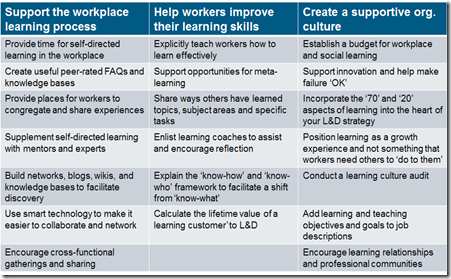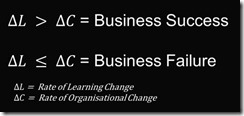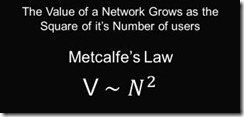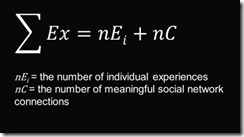| This is the second of three posts adapted from articles written for Inside Learning Technologies & Skills magazine. The original has been published here. The third article will be posted here a little while after it has been published in the magazine for the Learning Technologies Conference and Exhibition in London 26-27 January 2012. |
In the first article in this ‘Alice’ series I focused on the changing world of work and the evidence that workplace learning is usually more effective and efficient than formal learning. I also spoke of the need for learning departments to ‘join the dance’ (like the lobster in Alice) and develop new skills and capabilities so they can incorporate learning outside classrooms into their armoury, along with the development of structured learning.
In this article I want to turn to the ‘how’ of change and transformation in organisational learning and look at one specific approach that many organisations are finding useful to help them adapt to meet changing requirements and demands – the 70:20:10 framework.
As with the first article, I’m going to call on some insights from Mr Charles Dodgson (Lewis Carroll) for some help.
Who Stole The Tarts?
 At the beginning of his account of the trial of the Jack of Hearts (it was he who stole the Queen’s tarts) Carroll describes a fundamental truth about the frailty of human memory.
At the beginning of his account of the trial of the Jack of Hearts (it was he who stole the Queen’s tarts) Carroll describes a fundamental truth about the frailty of human memory.
Alice had never been in a court of justice before, but she had read about them in books. The twelve jurors were all writing very busily on slates. ‘What are they doing’ Alice whispered to the Gryphon. ‘They can’t have anything to put down yet, before the trial’s begun.’
‘They’re putting down their names,’ the Gryphon whispered in reply, ‘for fear they should forget them before the end of the trial.’
Maybe we can all remember our own names (although my wife tells me I could hide my own Easter eggs..) but the truth is that humans forget things quickly unless they’re learned in context.
We have known for a long time that learning works best when it takes place within the same context where the learned skills, practices and behaviours are to be used. Dr Hermann Ebbinghaus demonstrated the importance of context for memory as long ago as 1885. From his research, and from the research of others, we know that if learning and context are not tightly coupled, and if we don’t have the opportunity to put what we’ve learned into practice as soon as we’ve learned it, we will forget a significant amount very quickly (Ebbinghaus’ figures suggested a forgetting rate of around 50% within the first hour).
Also, if we don’t have anyone to turn to for help and support once we’re back in the workplace we often simply continue on doing what we did before we attended a learning event. I’ll discuss this last point in some more depth in the next article when I’ll look at the role of managers in organisational learning.
So it’s not surprising that with this reawakening of an understanding for the need for context in learning over the past ten years, much of the sheen has been rubbed off training for which we need to leave the workplace to attend. Of course away-from-work training and development serves a purpose. But that purpose is being seen as an increasingly narrow one.
Prior to the turn of the millennium the world of training was much simpler. If you worked in an organisation with commitment and budget devoted to employee development you discussed your development needs with your manager at the annual appraisal meeting and agreed the courses you would attend during the following 12 months. If you were in middle or upper management tiers, you did the same but called it ‘management development’ or ‘executive development’ and sometimes wrapped coaching and other activities in too. The courses for these groups were designed and delivered along the same lines as those for individual contributors. They were often just more expensive and usually run in a delightful green and leafy hotel or centre in some exotic part of the world, or in Surrey if you were based in London. Today the world of learning is a much more complex endeavour needing more than courses as the solution.
Continuous Learning is Becoming the Work
 ‘But then’ thought Alice, ‘shall I NEVER get any older than I am now? That’ll be a comfort, one way – never to be an old woman – but then – always to have lessons to learn! Oh, I shouldn’t like THAT!’
‘But then’ thought Alice, ‘shall I NEVER get any older than I am now? That’ll be a comfort, one way – never to be an old woman – but then – always to have lessons to learn! Oh, I shouldn’t like THAT!’
For many people, particularly those that earn their living with their heads rather than their hands and those that work in the knowledge industry, learning and work are becoming intertwined.
In order to improve the performance of our work we need to embrace a culture of continuous learning. This means viewing our work as a series of on-going learning experiences, continuously reflecting and improving as part of our daily activity.
A focus on continuous learning is leading the death of the out-of-date idea that formal training and development programmes are the principal answer to the challenge of improving performance in the workplace.
In place of event-driven learning we are seeing two things happen:
Firstly, many structured programmes are quite rightly extending into the workplace. Both pre-learning activities and experience and support and coaching back in the workplace are being integrated with formal away-from-work events. Most business schools and many in-house programmes now do this as a matter of course.
This represents an evolutionary rather than a revolutionary approach. There’s no doubt it is a step in the right direction but I don’t know if we can adapt to our rapidly changing world by taking a series of small steps rather than a few large ones.
Secondly, along with developments in technology we’re seeing increased interest in, and focus on, ‘informal’ learning approaches – ways we can support our colleagues’ learning and development as part of their daily tasks. Out of this trend have emerged new, or newly-revised, learning approaches – eLearning, social learning, workplace learning, on-job coaching and mentoring, mobile learning, and performance support to name a few. Together, these all provide greater flexibility and increased access to information and knowledge resources.
Informal learning and social learning are no doubt stealing the tarts. But there is no point attempting to introduce new informal and workplace learning approaches without a clear plan and a framework.
70:20:10 the Looking-Glass House

The 70:20:10 framework is just a little like Alice’s Looking-Glass House. It helps organisations to take a different view of the way learning and development can be approached. It moves focus to where most of the ‘real’ learning happens – in the workplace - yet retains some on the elements of formal, structured learning where it works.
At the outset it’s worth dispelling a common myth about the 70:20:10 framework.
A Reference Model, not a Recipe
The basic 70:20:10 framework
| 70% | 20% | 10% |
| Learn & develop through experience | Learn & develop through others | Learn & develop through structured courses & programmes |
The 70:20:10 framework is a reference model not a recipe. If you adopt it for your organisation you will need to apply the principles of the framework to your own context. For some organisations experiential learning (the 70+20 parts) may be the best approach for virtually all learning. For others, for example where compliance and proof of compliance training activity is critical, a greater focus on structured courses may be necessary.
The lesson here is not to become stuck on the exact ratios and percentages like a rabbit in the headlights . Everything will depend on context.
The Background to the 70:20:10 Approach

‘The question is,’ said Alice, ‘whether you can make words mean so many different things.’
The research most often referred to as the origin of the 70:20:10 model is often misunderstood and misquoted.
Morgan McCall and his colleagues at the Center for Creative Leadership in North Carolina carried out surveys with accomplished and high-potential executives and asked to them to describe key developmental events in their professional lives that made a difference to their management effectiveness. The results suggested (and reported the 1996 book ‘The Career Architect Development Planner’ by McCall’s colleagues Michael Lombardo & Robert Eichinger) that ‘the lessons learned by successful and effective managers are roughly’:
70% from tough jobs
20% from people (mostly the boss)
10% from courses and reading”
The point about this data is that it’s a rough extrapolation of the survey data only and the data collection methodology probably doesn’t hold up to robust academic scrutiny.
That, however, is no reason to dismiss the framework out-of-hand.
When these findings are put together with the growing number of other studies and surveys that have drawn similar conclusions[1] it becomes evident that most of what people learn (or retain and put into use) is learned as part of doing their work, not through formal training. Earlier work looking at adult learning carried out in the 1960s and 1970s by Alan Tough, now emeritus professor at the University of Toronto, also revealed the 70:20:10 pattern.
Additionally with the recent rise of social media the ability to learn with, and from, others has become much easier. So the rough 20 percent of ‘learning through others’ will no doubt increase in many cases.
However, regardless of the fine detail of the 70:20:10 model, and regardless of industry, worker age, technique or individual learning style, it is clear that most adult learning is balanced heavily towards experiential learning.
The basic principle of the framework is that it provides a structured approach to de-focus on event-based learning and re-focus on the broader aspects of organisational learning, principally the experiential elements. It helps approach the challenge of building an environment and encouraging a culture to support efficient and effective learning and development provision in an integrated way. We all know that learning is essentially a rather ‘messy’ business that varies from person to person and from organisation to organisation. The 70:20:10 framework helps build an operating model to manage it.
First Steps with the 70:20:10 Framework
There are a number of important factors you need to think about before you embark on using the framework in your organisation.
Step 1: Work towards developing a ‘results-led’ L&D culture
The 70:20:10 framework widens L&D’s focus and activity from building and maintaining catalogues of courses, programmes and curricula to managing workscapes (work/learning environments) and supporting learning experiences in the workplace. Although, of course, some resource and effort will need to continue to focus on the former, the vast majority of L&D’s work within the 70:20:10 framework will be involved with supporting experiential learning in the workplace.
For this to happen, L&D thinking and mind-sets need to move from ‘inputs’ (learning) to ‘outputs’ (impact and change in the workplace and helping people ‘work smarter’). As such L&D culture, the behaviours and attitudes of learning professionals, needs to reflect this change. L&D teams need to buy into this new thinking. You may need to build an internal change management process for your L&D teams to make sure everyone has taken this step.
The framework also places new demands and responsibilities on learners. They will need to accept greater accountability for their own learning as the environment evolves from one of “push” teaching to one of “pull” learning.
Step 2: Establish a robust engagement approach
Because the 70:20:10 framework moves L&D away from any ‘order-taking’ activities – by always looking to implement the fastest, smartest, most effective solutions to help people do their jobs better – you will need a robust, consistent and efficient engagement process to use with the executives, managers and team leaders across your organisation. It is important, whichever engagement approach you build or adopt, that it is consistent. A manager who engages with L&D to help her solve one business issue should expect the next engagement process to be identical, even if inputs and outputs are very different. This helps build confidence and relationships.
Step 3: Build an effective governance model
‘Governance’ defines the structures, systems, practices and processes that are put in place to ensure the overall effectiveness and accountability of the L&D function. If you plan to embed 70:20:10 thinking and practices it is important that you bring your organisation with you on the journey. Creating a governance council or board populated and led by key stakeholders is the first essential step to achieve this.
Step 4: Ensure you have the right L&D skills
I mentioned the need for new L&D skills in the first article (‘Croquet with a Flamingo’) but it needs reinforcing here. The 70:20:10 framework places very different demands on learning professionals from those that they may have been used to in the past. It demands they extend their repertoire beyond formal learning design and delivery. As such you will need to ensure your L&D team has the skill and experience to work with your stakeholders to create environments that facilitate learning and that they can design learning powerful experiences. Step away from content-centric learning design and into experience-centric design.
Some Actions for L&D to Deliver Results through 70:20:10
Below are a few practical actions L&D organisations and Learning professionals can take to deliver results through the 70:20:10 framework. Of course there are many more. There is no ‘cookie-cutter’ approach. If you are ever offered one, run away as fast as possible. Every solution needs to be driven by the needs, context and nature of your own organisation.
| Support the informal learning process | Help workers improve their learning skills | Create a supportive org. culture |
| Provide time for informal learning in the workplace | Explicitly teach workers how to learn effectively | Establish a budget for informal and workplace learning |
| Create useful peer-rated FAQs and knowledge bases | Support opportunities for meta-learning | Support innovation and help make small failures ‘OK’ |
| Provide places for workers to congregate and share experiences | Share ways others have learned topics and subject areas | Incorporate informal learning into the heart of your L&D strategy |
| Supplement self-directed learning with mentors and experts | Enlist learning coaches to encourage reflection | Position learning as a growth experience and not something that workers need others to ‘do to them’ |
| Build networks, blogs, wikis, and knowledge bases to facilitate discovery | Explain the ‘know-how’ and ‘know-who’ framework to facilitate a shift from ‘know-what’ | Conduct a learning culture audit |
| Use smart technology to make it easier to collaborate and network | Calculate the lifetime value of a learning customer’ to L&D | Add learning and teaching objectives and goals to job descriptions |
| Encourage cross-functional gatherings | Encourage leadership of these gatherings from amongst the group | Encourage learning relationships and professional communities |
[1] Incuding studies by: Loewenstein and Spletzer for the US Bureau of Labor Statistics; A 2-year study involving Boeing, Ford Electronics, Siemens, and Motorola by The Education Development Center in Massachusetts; A CapitalWorks study; and a 2010 survey by Peter Casebow and Alan Ferguson at GoodPractice in Edinburgh.


























